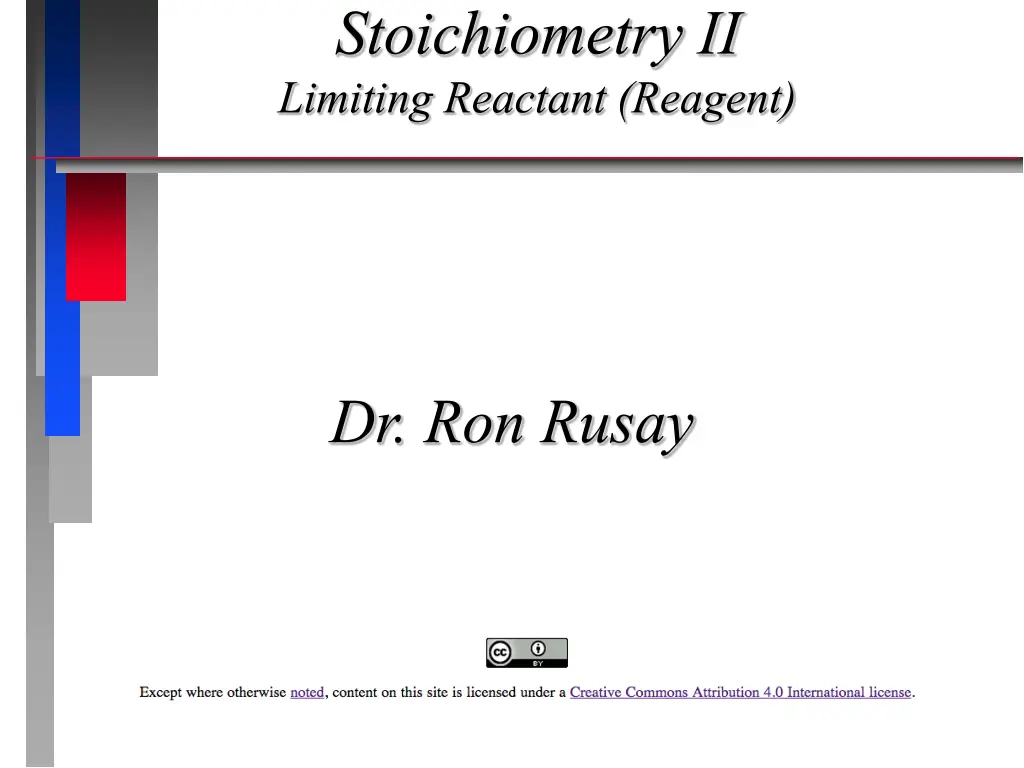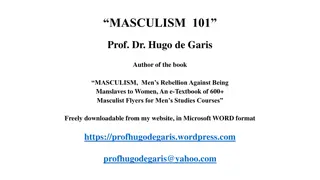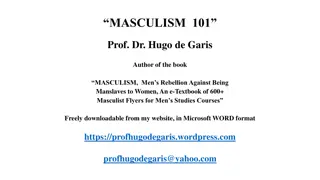
Understanding Limiting Reactants in Chemical Reactions
Explore the concept of limiting reactants in chemical reactions through examples like an ice cream sundae, and learn how to identify the limiting reactant using stoichiometry calculations. Discover the significance of food as a limiting reagent in sustaining a healthy world population and consider your own calorie consumption based on physical activity. Gain insights into determining a limiting reactant through mass applications.
Download Presentation

Please find below an Image/Link to download the presentation.
The content on the website is provided AS IS for your information and personal use only. It may not be sold, licensed, or shared on other websites without obtaining consent from the author. If you encounter any issues during the download, it is possible that the publisher has removed the file from their server.
You are allowed to download the files provided on this website for personal or commercial use, subject to the condition that they are used lawfully. All files are the property of their respective owners.
The content on the website is provided AS IS for your information and personal use only. It may not be sold, licensed, or shared on other websites without obtaining consent from the author.
E N D
Presentation Transcript
Stoichiometry II Limiting Reactant (Reagent) Dr. Ron Rusay
Limiting Reactant An Ice Cream Sundae ??????
Limiting Reactant An Ice Cream Sundae What s left? What s totally consumed? 8 scoops ice cream 6 cherries 100 mL syrup
QUESTION Consider the reaction between AB and B2 in the gas phase: Select the correct statement about this reaction. A)The balanced equation for the reaction is AB + B2 AB3. B) AB and B2 are present in stoichiometric (equivalent molar) amounts at the start of the reaction to consume all of both. C) AB is the limiting reagent. D) The product of the reaction is A2B.
http://www.cnafun.moa.gov.cn/zl/tjzl/201306/P020130620619849846691.pdfhttp://www.cnafun.moa.gov.cn/zl/tjzl/201306/P020130620619849846691.pdf QUESTION In less than 50 years, the world s population has doubled to over 7 billion people. The average healthy diet per person is ~2,700 kcal/person/day (very unevenly distributed). Total worldwide food production per year is estimated to be currently equivalent to ~3.04 1019 Joules (J) / year. ( 4.184 J = 1 cal) Therefore food is a limiting reagent in sustaining a healthy world population dynamics. A. TRUE B. FALSE
Do you consume more or less than 2700 Cal/day (kcal/day) based on your physical activity? (1 kcal = 4,184 Joules) Answer B. False Should intellectual activity be considered? 2700 Cal = 52.3 hrs of 60W light What is recommended for your age and relative life style? http://www.cnpp.usda.gov/publications/usdafoodpatterns/estimatedcalorieneedsperdaytable.pdf
Mass Applications: Determining a Limiting Reactant Does one of the reactants have fewer stoichiometrically adjusted moles than the other reactant? If so, the reactant with the smaller value is the limitingreactant. Calculation: Divide the mass of each reactant by its respective Molar Mass and then by its Stoichiometric factor from the balanced equation. Compare the results. The lowest one is the limiting reactant.
QUESTION 0.4 mol/ 2 0.1 mol/ 1








